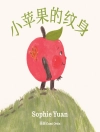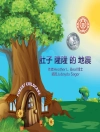The Tale of the Flopsy Bunnies illustrated Beatrix Potter – The Tale of The Flopsy Bunnies is a children’s book written and illustrated by Beatrix Potter, and first published by Frederick Warne & Co. in July 1909. After two full-length tales about rabbits, Potter had grown weary of the subject and was reluctant to write another. She realized however that children most enjoyed her rabbit stories and pictures, and so reached back to characters and plot elements from The Tale of Peter Rabbit (1902) and The Tale of Benjamin Bunny (1904) to create The Flopsy Bunnies. A semi-formal garden of archways and flowerbeds in Wales at the home of her uncle and aunt became the background for the illustrations.
In The Flopsy Bunnies, Benjamin Bunny and his cousin Flopsy are the parents of six young rabbits called simply The Flopsy Bunnies. The story concerns how the Flopsy Bunnies, while raiding a rubbish heap of rotting vegetables, fall asleep and are captured by Mr. Mc Gregor who places them in a sack. While Mc Gregor is distracted, the six are freed by Thomasina Tittlemouse, a woodmouse, and the sack filled with rotten vegetables by Benjamin and Flopsy. At home, Mr. Mc Gregor proudly presents the sack to his wife, but receives a sharp scolding when she discovers its actual content.
Modern critical commentary varies. One critic points out that the faces of the rabbits are expressionless while another argues that the cock of an ear or the position of a tail conveys what the faces lack. One critic believes the tale lacks the vitality of The Tale of Peter Rabbit which sprang from a picture and story letter to a child. Most agree though that the depictions of the garden are exquisite and some of the finest illustrations Potter created.
The book includes original illustrations by Beatrix Potter.
Sobre o autor
Helen Beatrix Potter was an English author, illustrator, mycologist, and conservationist who is best known for her children’s books, which featured animal characters such as Peter Rabbit.
Born into a wealthy household, Potter was educated by governesses and grew up isolated from other children. She had numerous pets, and through holidays in Scotland and the Lake District, developed a love of landscape, flora, and fauna, all of which she closely observed and painted. Because she was a woman, her parents discouraged intellectual development, but her study and paintings of fungi led her to be widely respected in the field of mycology.
In her thirties, Potter published the highly successful children’s book The Tale of Peter Rabbit and became secretly engaged to her publisher, Norman Warne, causing a breach with her parents, who disapproved of his social status. Warne died before the wedding.
Potter eventually published 24 children’s books, the most recent being The Tale of Kitty-in-Boots (2016), and having become financially independent of her parents, was able to buy a farm in the Lake District, which she extended with other purchases over time.
In her forties, she married a local solicitor, William Heelis. She became a sheep breeder and farmer while continuing to write and illustrate children’s books. Potter died in 1943 and left almost all of her property to The National Trust in order to preserve the beauty of the Lake District as she had known it, protecting it from developers.
Potter’s books continue to sell well throughout the world, in multiple languages. Her stories have been retold in various formats, including a ballet, films, and in animation.












